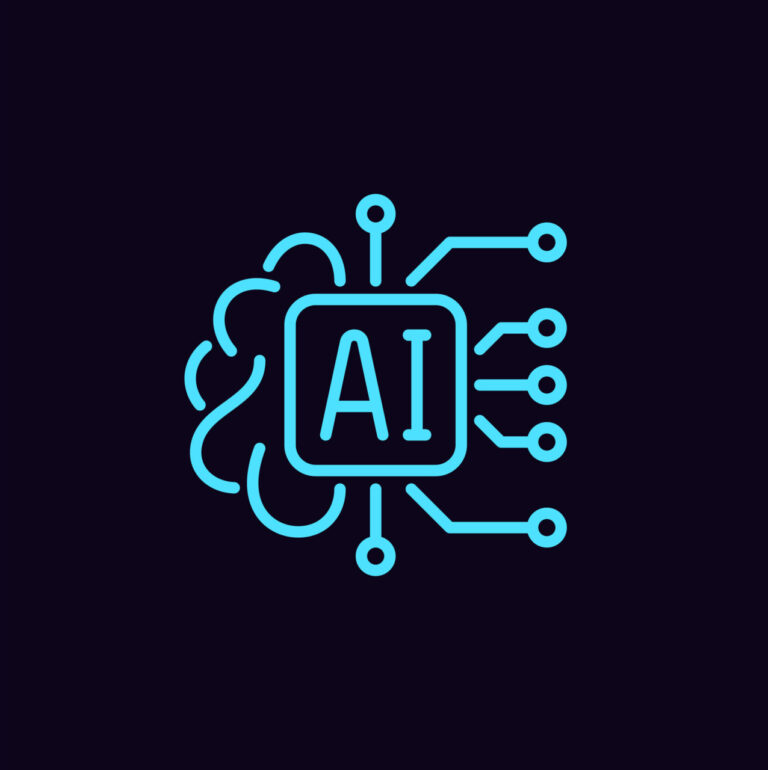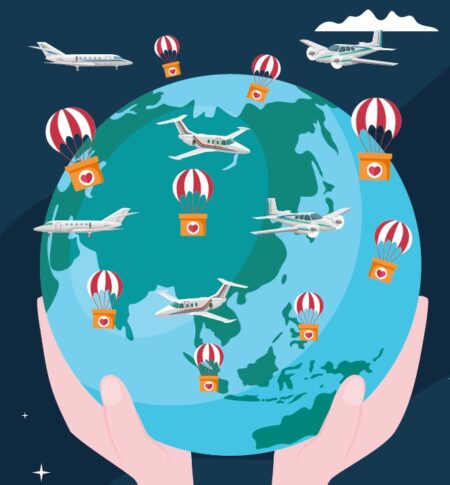It is true to say that artificial intelligence holds significant potential in the business aviation industry, and that the technology is rapidly evolving. However, there seems to be a mixed picture about to what extent it is currently making an impact beyond the excitement about the technology itself. Kyle Patel, president and CEO of charter company BitLux says, “I am not sure of too many applications that really have made an impact industry wide. However, I’m sure some companies use simple models.”
Nevertheless there are some important practical applications that could lead to real-world impacts – including a significant improvement in flight safety and accident prevention. There is also potential for artificial intelligence (AI) to be used to improve flight scheduling and predictive maintenance, as well as to enhance business processes. It can also be used to increase flexibility for both flight operators and passengers alike – saving time and money to make operations more efficient.
Yemaya Bordain, president of the Americas and chief commercial officer at Daedalean AI adds that the integration and usage of AI also includes onboard passenger entertainment, freight pricing and generative AI training – such as for how it is used in an aircraft cockpit to improve flight efficiency and safety. To this end, Daedalean has what it calls a visual awareness suite, which can be used to prevent a bird strike or to stop an aircraft hitting power lines. The company claims that it “is poised to be the first AI-enhanced system certified for civil use.”
Daedalean’s technology is used to detect cooperative and non-cooperative air traffic. The latter could be defined as birds that could pose a threat to an aircraft. At the 2024 NBAA Business Aviation Convention & Exhibition (NBAA-BACE) in October 2024 Bordain revealed that in commercial air transport, US$1 billion annually is spent on damage due to things like bird strikes. She therefore asked: “What if a system like ours could identify birds before a strike occurs?”
The visual awareness suite can operate without using transponders or radar, navigation and positioning in GPS-denied environments. As well as wires and cables, it can be used to detect other kinds of ground-based objects such as cranes and masts, while having the ability to offer landing guidance and runway incursion alerts.
“All functions are based exclusively on real time video from aircraft-mounted cameras, processed and analysed in real-time on an onboard computer,” Bordain says. “The business aviation community has reported great interest in implementing the landing guidance functionality as it would offer effective assistance in the many uncontrolled runways business aircraft utilize.” Traffic awareness systems are also attracting rotary-wing and eVTOL aircraft operators.
AI in design
Adam Keating, CEO and co-founder at CoLab Software says there may be another application of AI that operators may not have considered, the design of the equipment they ultimately purchase. He says, “AI can be used to help engineering teams design safer, more effective equipment, and we have launched an artificial intelligence and machine learning toolset that organizes and surfaces design insights from thousands of engineering design reviews, so that engineers can make more informed decisions during new product development. This technology can prevent repeat errors, quality escapes, and safety critical issues.”
Yet while the term artificial intelligence isn’t new, it’s vital to consider how it’s evolving. Part of the ambition of AI is to make it sentient, like humans, but better. However, at NBAA-BACE, Mark Groden, the founder and CEO of flight automation company Skyryse suggested that the term AI is as broad as the term software is, and there still a long way to go to achieve true artificial intelligence.
When he was at grad school he had a textbook, called ‘Artificial Intelligence and Machine Learning’ that was up to 400 pages long. Yet over the last 20 years only – at most – 3 chapters have had any meaningful update to them, and “that’s what’s created ChatGPT,” explains Groden, which is non-deterministic and generative artificial intelligence. What has improved the most is the language models used to make it all work. They are much better than they once were when artificial intelligence was first used in printer troubleshooters.
“You can separate AI into two categories – deterministic and non-deterministic,” Groden explains.
Deterministic AI means that you write an equation and always get the same answer with the same inputs. This approach makes it easier to gain flight certification from the FAA in the USA for aircraft in the business aviation sector. So, for this reason, this is where Skyryse focuses – on what are also known as expert systems, which include fly-by-wire avionics and two touchscreens: multi-function and primary flight displays as well as the control stick.
Deterministic AI isn’t sentient. It might feel like artificial intelligence, Groden says, but it’s not. He explains why: “It is just a lot of complicated causal statements with nested equations that govern how this aircraft flies through the sky.”
Yet modern approach tends to strive to use non-deterministic AI, which are often far more complex and can lead to a wider array of unexpected outputs, and responses to situations that haven’t been determined. Subsequently, their application makes it harder to currently gain certification from the FAA.
That said, there is much excitement about non-deterministic and generative AI. Groden nevertheless comments that only deterministic AI has a role to play in flight at present.
“You need a deterministic system to fly an aircraft. However, there are good applications in our industry that could benefit from non-deterministic methods such as maintenance and scheduling, where there is a human being at the end of that chain taking that information and making a smart decision based on what they learned,” Groden says.
He believes that improvements can certainly be made to “some of the new methods and technologies that are coming out, but they are not going to be on board the aircraft, and certainly not closing the loop on them any time soon.”
Jon Damush, president and CEO at uAvionix Corporation considers humans to be the non-deterministic thing at the controls of any aircraft. He is both a commercial pilot and flight instructor, and therefore observes that you never truly know what a student pilot is going to do next because we are “wonderfully complex non-deterministic systems”. This enables us to do things computationally that computers find hard to do.
Damush once worked for a Boeing subsidiary called Insitu, which makes low-altitude unmanned surveillance and reconnaissance aerial aircraft such as ScanEagle and the Integrator. In late 2000 the approach to the software was nevertheless deterministic.
“We needed to know what that aircraft was going to do if it got a bullet in a wing, ran out of gas, if some carb ice happened,” he explains before agreeing that there is no need for non-deterministic AI systems in the cockpit, and that the role of AI should be to support humans and not replace them.
He adds, “It drives me nuts when I go to an airport and get into a small aircraft and I have to check 12 circuit breakers, flip a couple of switches, pump a throttle, prime a switch, hear a motor going, and the hope to God the engine turns over. Then when I am done with my flight, I hit a button in my car and go home. This is where we need to go, simplified pilot operations, augmentation with a focus on safety. This is where AI and non-deterministic methods can really help our stats in our industries.”
Assuring AI safety
With safety concerns paramount, the FAA has developed an AI roadmap with industry and other aviation regulators. It says the aim is to establish the guiding principles for assuring the safety of AI in aviation and to establish priorities and plans for its safe introduction. FAA associate administrator for aviation safety David Boulter adds that the challenge the 21st Century faces is to “deliver increasing levels of service while maintaining the safest, most efficient aerospace system in the world.” He also says technology and innovation present tremendous opportunities and challenges for sustainability of the aerospace system.
Patel says widespread adoption of AI in business aviation is very difficult to achieve, owing to the highly segmented nature of business aviation. This will change when the underlying platforms that many companies use implement artificial intelligence. Meanwhile, he says AI is used by his company to complete a multitude of tasks to improve the efficiency of experts. This includes automated mission communication analysis, enabled by non-proprietary application that ensure communication isn’t stuck in his company’s court in terms of customer communication.
He explains, “We’re a very global company, so we use an AI LLM to translate customer communications across multiple dialects and many languages. In any given year, we work on every continent except Antarctica, so it’s important for our customers to know we understand them.”
Gaining efficiencies
Keating says AI can also help to make business processes more efficient, including at the product design stage.
“By improving processes at the product design stage, AI tools can reduce bill of materials costs by 50%, and reduce the risk of product delays, warranty claims and product recalls,” says Keating. “This would reduce costs for aviation equipment manufacturers, and also mitigate the costs of product delays and warranty claims for airport and aircraft operators.”
AI can also seamlessly improve customer relations and communications in ways customers may not realize that they’re engaging with the technology. “We have a human touch involved in almost everything,” he claims.
“However, imagine a team of assistants helping your operations or sales specialist to streamline the process, remember preferences, allergies, and passport information.” Customer experience could also be enhanced through better flight scheduling to provide more choice and flexibility to both customer and operator.
The application of technologies such as artificial intelligence and machine learning is likely to be broad throughout business aviation. While it seems that it is still in its infancy, AI is going to play an important role in the industry, and it will play a greater role in the next 5 to 10 years. At the core of its integration will be safety, regulatory compliance including in aircraft design, and flight certification before any consideration of cost efficiencies and customer experience. There will of course be important secondary factors, particularly during challenging economic climes. AI and ML are here to stay, and their adoption will grow as more people come into contact with it.
Read this and similar articles in their original magazine format online. Want more? Industry professionals can subscribe to our print and online magazine and our weekly newsletter free of charge now.





